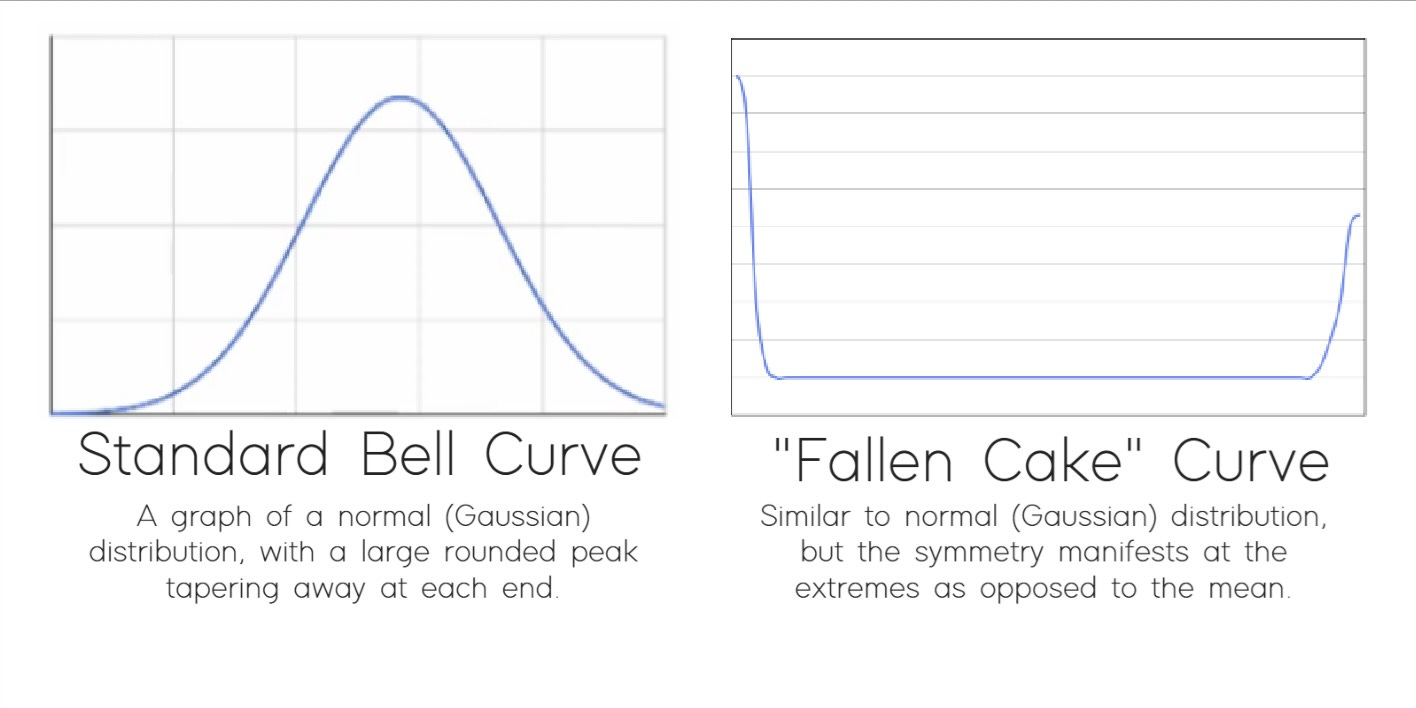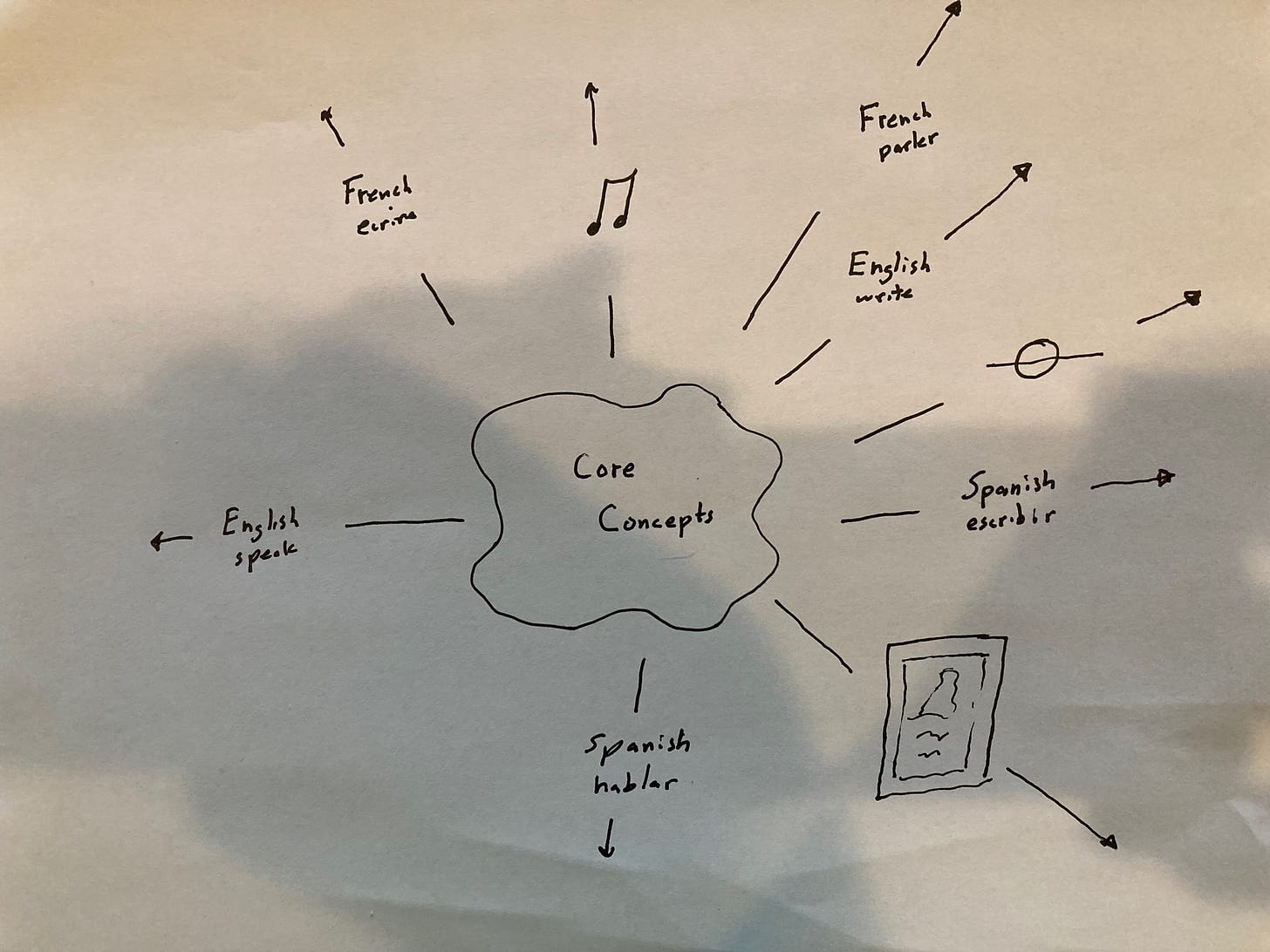Everyone is familiar with the old “bell curve”. It is used as an indication of distribution for many different things from school grades, to “IQ”, to the ability to afford housing, and so forth. But, there is another graph that applies to attitudes. I am sure that it has a real name but I will just call it a “fallen cake” model. Although it does not happen often nowadays (does anyone know why?), cake batter within a mold will raise uniformly across the pan and then, because of a strong vibration or other event, the middle can just fall — leaving the edges relatively high with a wide plateau in-between that looks more like a crater. Unlike the bell curve which has its peak in the “center”, a fallen cake model will have two highs — one at each end of the graph.
The fallen cake provides the shape but not the interpretation. For attitudes on most issues (pick your favorite, or least favorite, one) — there will be a group of people actively supporting the issue and another group actively fighting against the issue. These are the two “humps” at the ends of the horizontal axis. The height of the humps is a reflection of the activity of the group.
That big flat area in-between are people who are passive. The flat area is almost always a wide area. If the humps are about the same height then they are fairly well matched though the width does come into play as it indicates the number of people in that active group. The shape changes as various factors are involved. Those passive people still make a difference as they still control votes or taxes or other means of input. Both humps will try to make the passive folk amenable to their position. The various “controversies” about issues are indicators of the flux within attitudes.
Homosexuality, as well as all other folk within the LGBTQIA+ area, is not new. Various accounts have been recorded as far back as there have been written records. The First Nations were well aware of the diversity within humans and celebrated them. In various studies, there have been indications that external factors can affect the numbers in diversity but they are involved with gestation factors and occur before birth. Numbers of such are not zero and never have been and have never been a choice. The width and height of the humps, indicating acceptance or xenophobia, have vacillated throughout history.
The medical, and recreational, use of marijuana has been reflected in attitudes throughout the past 60 or 70 years. My father talked about usage of marijuana as an ordinary, non-controversial, type of recreational drug within the Navy during deployment in the Korean War. At that point, it was a “who cares” issue. But with political and idealogical involvement, the fallen cake model started mobilizing against usage and, of late (with profit models being developed), for generalized usage once again. On one side are people who don’t think it is an issue with which the government should be involved and on the other side are people who think that all vices should be rigidly controlled. People who profit from the “drug wars” are particularly opposed to legalization.
The United States is the only “developed” country which does not provide a baseline set of health care services for all citizens. Most countries do have the opportunity to pay for private insurance but such plans are in addition to that provided within their individual universal health care plans. This is very similar to those in the US able to be covered by Medicare, with private insurer “Part B” and “Part D” able to boost your benefits above basic Medicare. Yet, after indication of the majority of the US population indicating a desire to implement Universal Health Care, it continues to face uphill struggles. I talked about this in another blog recently. It fits the fallen cake pattern. There are people actively trying to get the US to provide for Universal Health Care and others who are actively trying to maintain the existing unique for-profit healthcare business model.
There are many attitudinal issues for which the fallen cake model can be applied — climate change, AI development and ethical issues, the death penalty, mandatory vaccinations, public education, disarmament versus weaponization, participatory democracy versus authoritarianism, and so forth. There are also issues which appear to be “settled” that are actually still part of a fallen cake model and attitudes are still in flux. Many of the social support and movement aspects are in this category. I often place a pin on a history graph, at the point where feudalism started to become less acceptable, as a starting place for improvement on general social issues. As brought out in “The Handmaid’s Tale” attitudes can backslide.
When a person is actively involved with one of these issues, it can feel like
There is no chance of change in attitudes (completely stable and accepted)
People will never agree on a new attitude (discouragement)
Change is “just around the corner” (enthusiasm and exultation)
The reality is that attitudes change. Attitudes about measurable facts can change. Attitudes about emotional issues can change. What is an accepted situation can become a forbidden situation (and vice versa). Hope for change is always reasonable and apathy about the inability (though not necessarily the difficulty) to change is to be overcome.
Hope and helplessness can, and do, co-exist.


